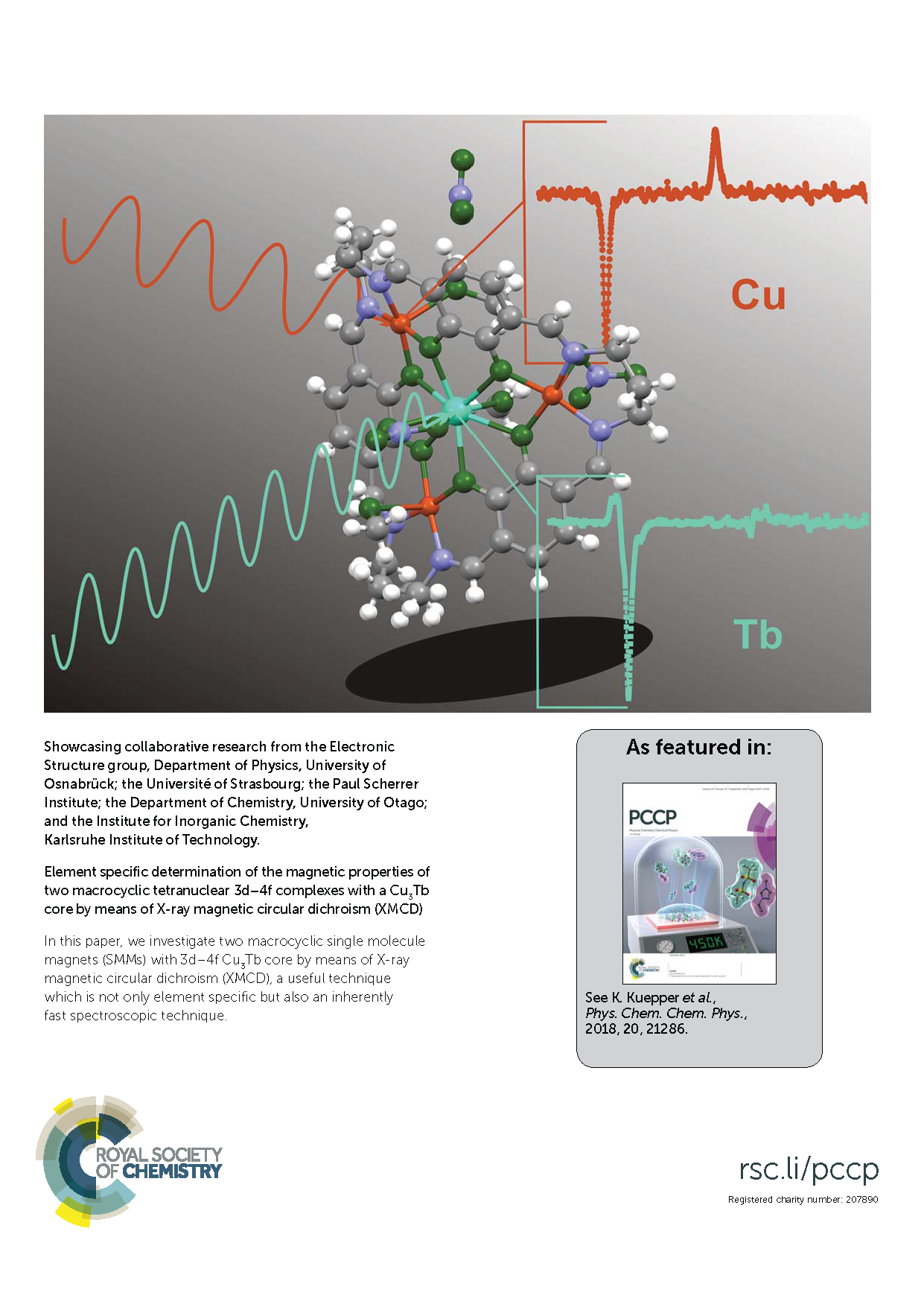Hauptinhalt
Topinformationen
Elektronische Struktur (Experiment)

Die Arbeitsgruppe "elektronische Struktur (Experiment)" befasst sich mit den zugrunde liegenden elektronischen und magnetischen Eigenschaften neuer Materialien. Als experimentelle Techniken werden dabei vorwiegend die Röntgenphotoelektronenspektroskopie (XPS) und die Röntgenabsorbtionsspektroskopie (XAS) eingesetzt. Damit ist eine eingehende Charakterisierung der besetzten (Valenzband) und unbesetzten Zustände (Leitungsband) möglich. Zudem können mittels der kernnahen Spektren Rückschlüsse auf den Valenzzustand und die lokale Koordinierung einzelner Ionen im Molekül oder Festkörper gezogen werden. Für zusätzliche Erkenntnisse werden komplementär auch Röntgenemissionsspektroskopie (XES) (Bestimmung von elementspezifischen Zustandsdichten) und der Röntgenzirkulardichroismus (XMCD) (elementspezifische Bestimmung magnetischer Eigenschaften) eingesetzt. Von zentraler Bedeutung ist zudem ein Vergleich der experimentellen Daten mit geeigneten theoretischen Ansätzen wie Bandstrukturrechnungen und Mutiplettsimulationen, welche in Kooperationen mit mehreren theoretischen Gruppen durchgeführt werden.
Electronic Structure (Experiment)
The group "Electronic Structure (Experiment)" investigates the underlying electronic and magnetic properties of new advanced materials. Main experimental probes employed include X-ray photoelectron spectroscopy (XPS) and X-ray absorption spectroscopy (XAS). This combination results in a determination of the (total) occupied densities of states (valence band) as well as the unoccupied densities of states (conduction band). Furthermore, X-ray emission spectroscopy (XES) provides a powerful tool for the investigation of the element specific distribution of the electron density. Core level spectra, e.g. at transition metal L edges provide complimentary information about valence states and the local electronic structure around a transition metal ion. Dichroic techniques, i.e. x-ray linear dichroism or X-ray magnetic circular dichroism (XMCD) can access the orbital or spin degree of freedom directly. The experimental results are analyzed in combination with ab initio electronic structure calculations and full multiplet simulations, which are performed in collaboration with theoretical groups.



